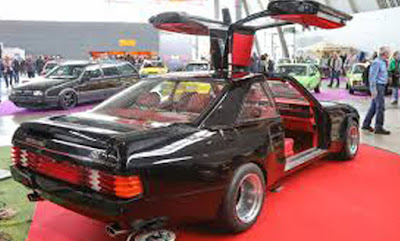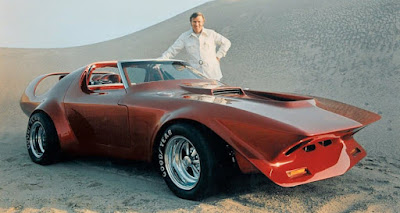The Reviving Icon - In the world of automotive design, few names resonate like Marcello Gandini. Known for shaping some of the most iconic cars in history, his work includes the Lamborghini Miura, Countach, and the Alfa Romeo Montreal. Yet, one of his most experimental concepts, the Autobianchi A112 Runabout, showcased his innovative spirit in 1969 with a bold, motorboat-inspired design that defied conventions.
 |
| The return of a 1969 Design Icon: the Bertone Runabout as “pure geometry,” drawing on the simplicity that defined Gandini’s vision. (Picture from: Autocar) |
The original Runabout was a vision of Gandini’s creativity during his time at Gruppo Bertone, influencing future designs like the Fiat X1/9. Although never intended for mass production, it set a distinctive design language, blending sharp angles with playful proportions. Now, more than 50 years later, Bertone has decided to revive this concept, transforming it into a high-performance supercar.
 |
| The Autobianchi A112 Runabout, a brainchild of Marcello Gandini of Bertone, exuded a distinct charm, and made its debut at the 1969 Turin Motor Show. (Picture from: Autocar) |
This modern Runabout has been redesigned by Andrea Mocellin, a designer with experience at Nio and Pininfarina. While Mocellin’s career isn’t as extensive as Gandini’s, his talent and vision bring fresh life to the Runabout, merging the essence of the original with modern aesthetics. Mocellin describes the car as “pure geometry,” drawing on the simplicity that defined Gandini’s vision.
 |
| While the 1969 concept was a fully open barchetta, the new Runabout will feature an optional targa top. (Picture from: Autocar) |
Staying true to its wedge-shaped form, the new Runabout incorporates necessary updates for today’s roads. The quirky, high-mounted headlights from 1969 have been replaced with pop-up lights in the nose, giving a cleaner look. Practical features like doors and side mirrors, absent in the original, enhance usability while maintaining the classic silhouette.
 |
| Maintaining its wedge-shaped form, the new Runabout updates the 1969 high-mounted headlights with sleek pop-up lights for a cleaner look. (Picture from: Autocar) |
Under the hood, the new Runabout boasts a powerful 493bhp V6 engine—a stark contrast to the original’s modest 1.1-liter. This added power transforms it from a design concept into a genuine driver’s car. The aggressive front now features a larger grille, a modern necessity for cooling, without disrupting the streamlined design.
 |
| The Bertone Runabout two-seater cockpit sticks to a minimalist ethos, with red and black upholstery offset by cool aluminum accents—a stylish nod to performance-focused design without overindulgence in high-tech clutter. (Picture from: Autocar) |
A notable addition to the updated Runabout is a targa top, giving drivers the option to enjoy open-air driving or close the cockpit, a feature the original didn’t have. This flexibility caters to both the thrill-seeker and the everyday driver, enhancing the car’s appeal.
 |
| Under the hood, the Bertone Runabout roars as a full-fledged supercar with a 493bhp V6 engine—a bold upgrade from the original’s modest 1.1-liter. (Picture from: Autocar) |
Scheduled for production in 2026, the new Runabout will start at €350,000, making it a luxury collector’s item. As the first in Bertone’s Classics range, this car honors Bertone’s legacy, while introducing a new chapter for the design house. The video below showcases the 1969 Runabout, offering a glimpse of this legendary design.
 The reimagined Runabout symbolizes the enduring charm of Italian design, combining past innovation with today’s technology. Through this revival, Bertone not only pays homage to Gandini’s vision but also sets the stage for future creations, blending heritage with modern engineering for a new generation of enthusiasts. *** [EKA | FROM VARIOUS SOURCES | BERTONE | AUTOCAR | CARBUZZ | CARSCOOPS ]
The reimagined Runabout symbolizes the enduring charm of Italian design, combining past innovation with today’s technology. Through this revival, Bertone not only pays homage to Gandini’s vision but also sets the stage for future creations, blending heritage with modern engineering for a new generation of enthusiasts. *** [EKA | FROM VARIOUS SOURCES | BERTONE | AUTOCAR | CARBUZZ | CARSCOOPS ]Note: This blog can be accessed via your smart phone





































